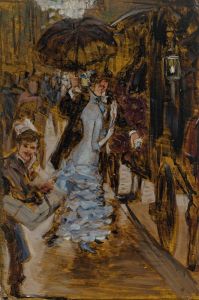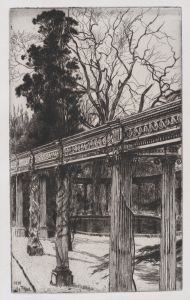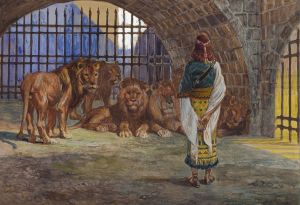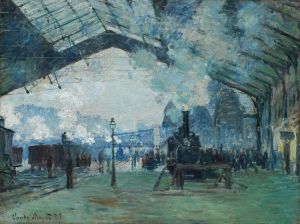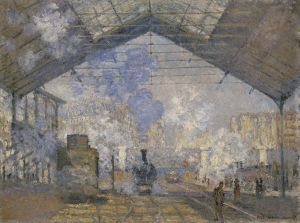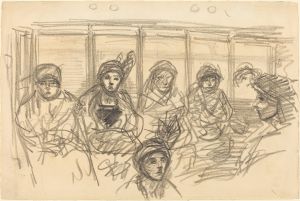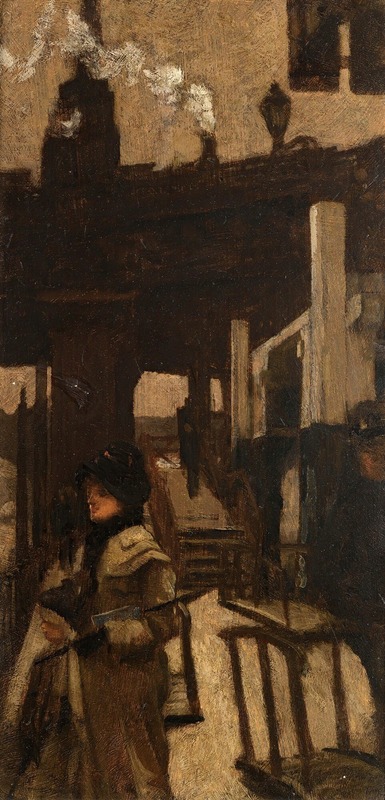
À La Gare De L’est
A hand-painted replica of James Tissot’s masterpiece À La Gare De L’est, meticulously crafted by professional artists to capture the true essence of the original. Each piece is created with museum-quality canvas and rare mineral pigments, carefully painted by experienced artists with delicate brushstrokes and rich, layered colors to perfectly recreate the texture of the original artwork. Unlike machine-printed reproductions, this hand-painted version brings the painting to life, infused with the artist’s emotions and skill in every stroke. Whether for personal collection or home decoration, it instantly elevates the artistic atmosphere of any space.
James Tissot, a French painter known for his detailed and fashionable depictions of contemporary life, created the painting "À La Gare De L’est" during the late 19th century. Tissot, whose full name was Jacques Joseph Tissot, was born on October 15, 1836, in Nantes, France. He became renowned for his genre paintings that often captured the elegance and intricacies of Parisian society during the Belle Époque.
"À La Gare De L’est" is one of Tissot's works that exemplifies his keen observation of modern life and his ability to portray the nuances of social interactions. The painting is set in the Gare de l'Est, one of the major railway stations in Paris, which was a hub of activity and a symbol of the modern age of travel and communication. The station, originally called the Gare de Strasbourg, was renamed in 1854 and served as a gateway to eastern France and beyond, making it a fitting backdrop for Tissot's exploration of contemporary themes.
In this painting, Tissot captures the hustle and bustle of the train station, a place where people from various walks of life converge. His attention to detail is evident in the depiction of the architecture of the station, the fashion of the figures, and the overall atmosphere of movement and anticipation. Tissot's work often reflects his interest in the social dynamics of his time, and "À La Gare De L’est" is no exception, as it portrays the interactions and emotions of individuals in a transient space.
Tissot's style is characterized by his precise and realistic approach, which he achieved through meticulous brushwork and a keen eye for detail. His ability to capture the textures of fabrics, the play of light, and the expressions of his subjects contributes to the vividness and immediacy of his paintings. In "À La Gare De L’est," these qualities are evident as he brings to life the scene of a busy railway station, with its diverse crowd and the sense of movement inherent in such a setting.
Throughout his career, Tissot was influenced by various artistic movements, including Impressionism, although he maintained a distinct style that set him apart from his contemporaries. His works often reflect a narrative quality, inviting viewers to engage with the stories and characters depicted within the canvas. "À La Gare De L’est" is a testament to Tissot's ability to weave narrative and detail into a cohesive and engaging composition.
James Tissot's paintings, including "À La Gare De L’est," continue to be appreciated for their historical and artistic significance. They offer a window into the social fabric of 19th-century Paris, capturing the elegance and complexity of a rapidly changing world. Tissot passed away on August 8, 1902, in Buillon, France, but his legacy endures through his contributions to the art world and his insightful portrayals of his era.








